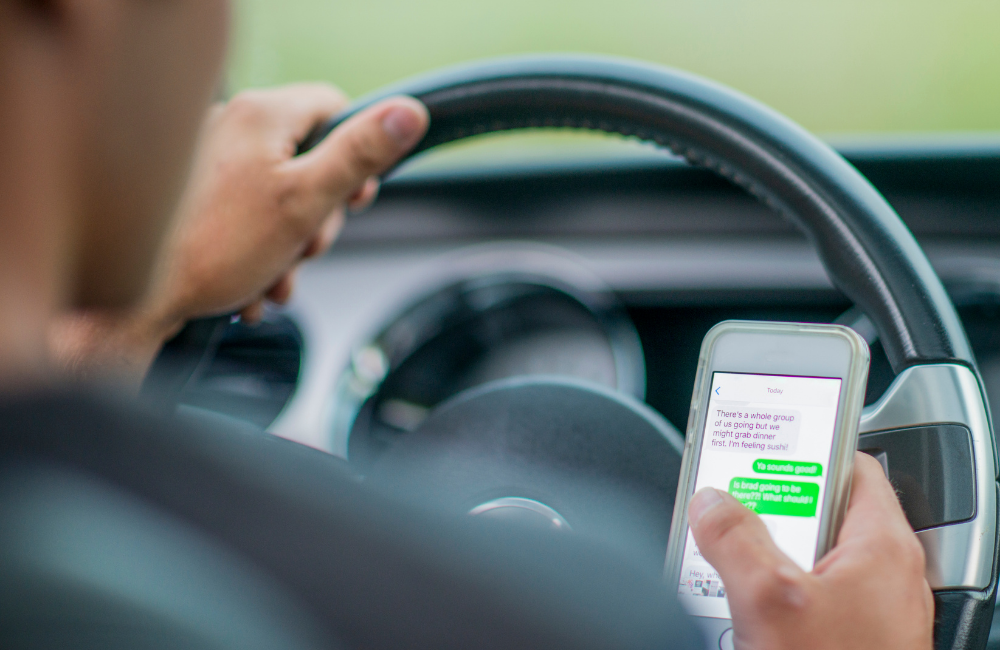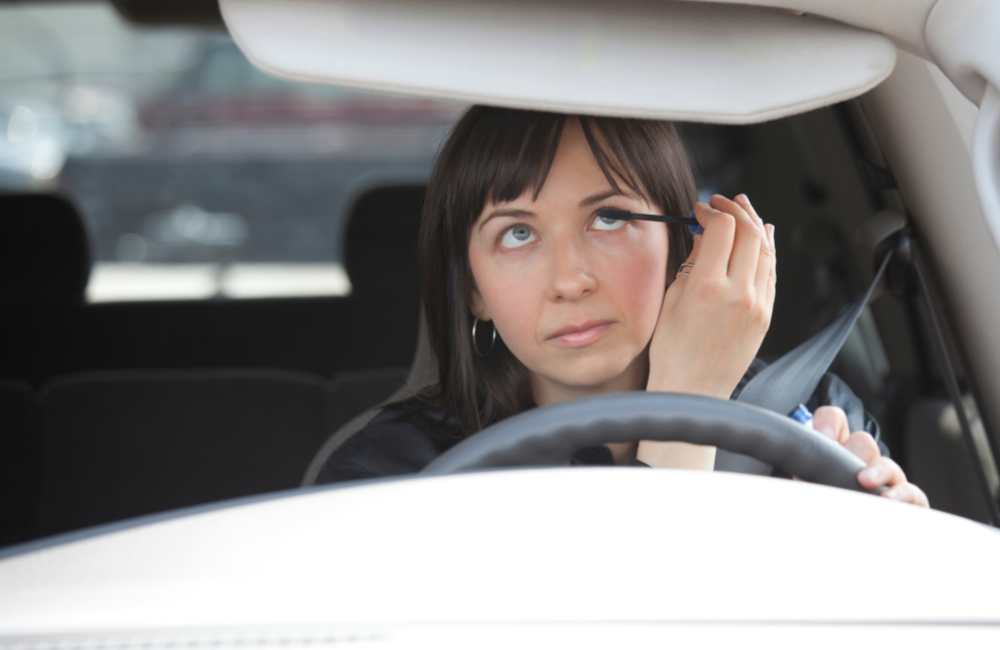Distracted Driving in Florida Kills
Have you ever sent a text message while driving and looked back at the road to find the car in front of you coming to a stop, and you had to slam on the brakes to keep from rear-ending it? Or reached into a fast food bag, fumbled around for your burger, and completely missed the car that was trying to merge into your lane right in front of you? You are not alone, but driving distracted is dangerous and is the cause of thousands of accidents and deaths each year nationwide.
A recent survey revealed that 52.5% of drivers eat while driving, 23.6% admit to texting, and 3.4% confess to drinking alcohol while driving! The results of this survey are pretty sobering and emphasize the importance of removing all distractions while driving to protect yourself and other drivers.
Table of Contents
- Types of Distractions
- Distracted Driving in Florida Statistics
- How To Avoid Distractions and Drive Defensively
- Your Boynton Beach Car Accident Lawyer
Types of Distractions
With all of the technology in cars and social media on your cell phone these days, distracted driving is on the rise. And it only takes a few seconds for something to go terribly wrong. For example, if you are on the highway driving 65mph, you will travel 95 feet per second! So taking your eyes off the road for 3 seconds to answer a text means that your car will travel almost 300 feet! It’s important to know what driving distractions are so you can avoid them and be able to spot other drivers that may be distracted.


- Visual distractions are anything that makes you take your eyes off the road, like reading or answering a text, looking for something in the passenger’s seat or glove box, and even tuning the radio.
- Manual distractions are anything that makes you take your hands off the steering wheel, like eating and drinking, adjusting your mirrors, or answering a phone call.
- Mental distractions are anything that takes your mind and focus off of driving, like having a heated argument with a passenger, daydreaming, or singing along to your favorite song!
- Many of these distractions combine visual, manual, and mental, making them extremely dangerous.
Distracted Driving in Florida Statistics
The Florida Highway Safety and Motor Vehicles Department(FLHSMV) reported in their 2020 Annual Report that 341,399 total crashes were causing 3,332 deaths (page 8). 726 of those fatalities were classified as drivers operating a motor vehicle in a careless or negligent manner (page 28), 406 from drivers failing to yield the right of way, and 256 people lost their lives from drivers failing to stay in the proper lane. The statistics of distracted driving in Florida are startling.
Some other astounding stats:
- 198,134 cases of property damage only
- 106,927 crashes involving 15 – 24-year-old drivers
- 92,247 hit and run crashes
- 8,117 crashes involving pedestrians
- 4,554 alcohol confirmed crashes
How To Avoid Distractions and Drive Defensively
- Put your phone away! It sounds pretty simple but so hard for many people to do. Put your phone on airplane mode or turn it off and keep it out of sight. Is answering that phone call or text worth risking your life or someone else’s?
- Eat before or after you drive or pull into the parking lot after ordering fast food.
- Keep your eyes moving. If you keep your eyes fixed on one thing for too long, you start to lose your peripheral vision, also known as “Tunnel Vision”. Get into a pattern of sweeping the mirrors with your eyes, looking out the windshield at the car in front of you, and looking out at what is way up ahead, so you know what’s coming. Try to move your eyes every 2 – 3 seconds.
- Drive appropriately for the road conditions. If the roads are really wet with standing water, slow down and increase your following distance.
- Keep a safe following distance. Following distance is one of the best defensive driving tools out there but is often underutilized. A safe following distance is 6 – 8 seconds behind the vehicle in front of you. A simple way to check your following distance is to pick out a mile marker, fence post, sign, or anything else that’s stationary right next to the road. When the car’s rear bumper in front of you passes your reference marker, start counting the seconds until you reach the same point. If it’s less than 6 seconds, slow down and increase the space between you and the car you’re following. This is important because if that car stops abruptly or loses control, the more space you have equals more reaction time.
Your Boynton Beach Car Accident Lawyer
If you or a loved one have been in a car accident, it is often frustrating and confusing to know what to do next. Call a Boynton Beach car accident lawyer at the Bodden & Bennett Law Group to schedule a free, no-pressure case evaluation.



